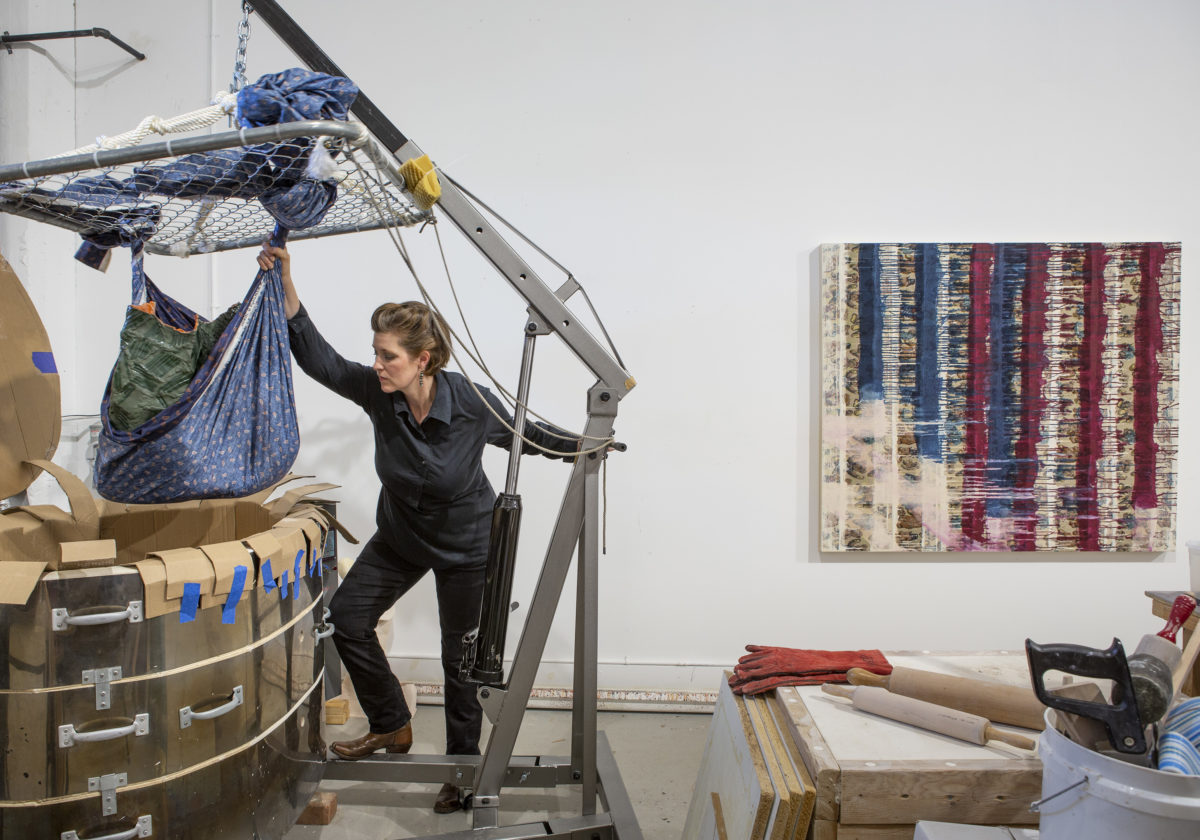Working Notes:
On Tuttle, Rouan, Hantaï,
Salcedo, and Binion
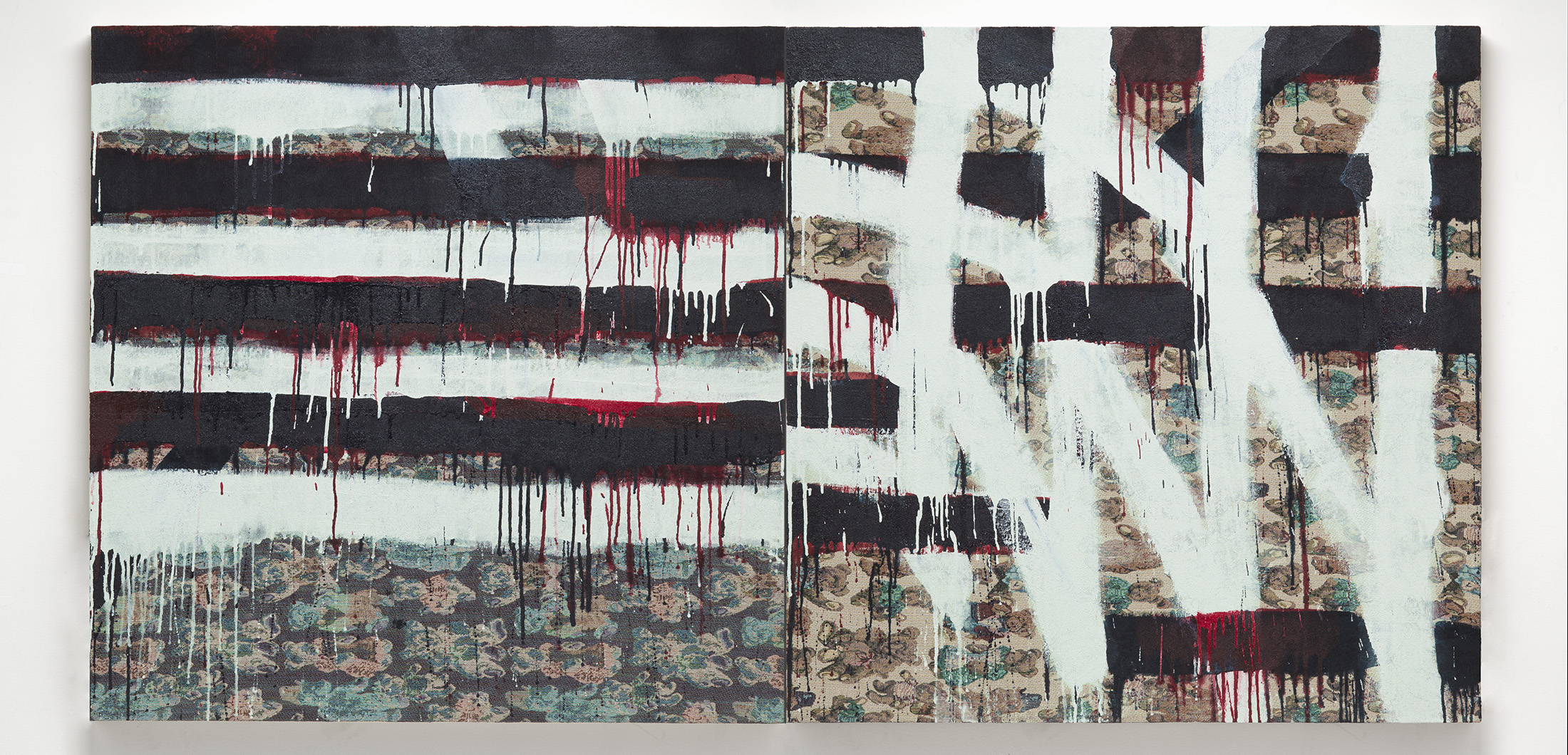
When Gravity Becomes Material: Mint Red Oso, 2018. 47h x 94.25w x 2.25d
Acrylic and Domestic Textiles on Board.
Photograph by Tim Thayer.
I came to Tuttle slowly - too slowly. At Cranbrook I thought artists were taking “the wrong lessons” from Tuttle’s fragments, turning objects into a shorthand. Lean a broom stick in the corner and dare the room to speak. Trained in architecture, modernism and minimalism where familiar, philosophical / conceptual approaches were the norm, but this Tuttle-derived gesture felt like a prank. (In any Book of Contemporary Art, several chapters would be devoted to “Under the Sign of Tuttle”!) As the derivative Tuttle works of the early 2000’s faded, space opened to revisit the originals: Tuttle’s fragments, part-objects, Tuttle’s textures, the Tuttle who showed in Szeemann’s When attitudes become form (1969), but above all Tuttle’s thinking. One felt a certain humiliation in learning that Tuttle was not his admirers. Richard Tuttle changed the field of practice because he defined the new periodic table of how one relates art to the material world as well as how one relates to the material world through art. In this light, the original work emerged to me like a born-again. Suddenly I felt deep regret for missing out on my mentor Tony Hepburn’s insights on Tuttle and I proceeded to catch up - or make up time. (In Detroit Research 2 we published an installation shot of Tony Hepburn, M.P. 7, 1971, cloth, clay, string, from his exhibition Recent Works (Materials Pieces), 1971, at the Camden Arts Center in London which shows a process-based practice drawing on Tuttle and the examples exhibited in When attitudes become form. There I also mentioned that in correspondence with me Hepburn talked of his dialogue with Tuttle’s work.) The same spareness in Tuttle’s work that had initially thrown me off drew me back as an adult open more widely to a certain internal solitude and the complexity or relational predicament suggested by the work. I was finally able to enter the work.
And then I learned that Tuttle was a collector of textiles, of quilts. He stacks and does not hang them which is critical. They are not for display - like substitute paintings, which they are not, like substitute abstract paintings - but rather for their intrinsic qualities, and honor in function.
Tuttle is the material thinker of our age and luckily my resistance went unnoticed.
He is the creator of living drawings, animator of dabs.
Relationships stapled together quickly using space, color, line, and materials. Humility through variety and speed like encounters throughout the day - you wake up mad, you are laughing mid-day, and crying at a death notice before bed.
To be these materials and naked shapes in space is to live a life in a body.
The frame is the family we all have and they protect, squeeze, and impinge alternately. All of life’s existence, perceived through a body, slammed up against, hung from, muffled corners, floors. Floating in white space, is it freedom or loneliness?
He doesn’t insist on anything, but just keeps thinking and proposing.
Tuttle’s use of platonic geometries existing as primary, nude, naked, free, or chilly. The simplicity of relativity, like 100 poems a day.
He depicts too close and too lonely and includes lots of knots against plainness. No one has ever thought of these but everyone has felt them.
He drives a nail through the intrinsic.
This work is the solitary in conversations with forces.
He evokes while sparing you the journal pages - a skill I lack. Phrasal planeness construction as a poker to the fatigue of business. The lack of monument and the fragility of the lone body in space.
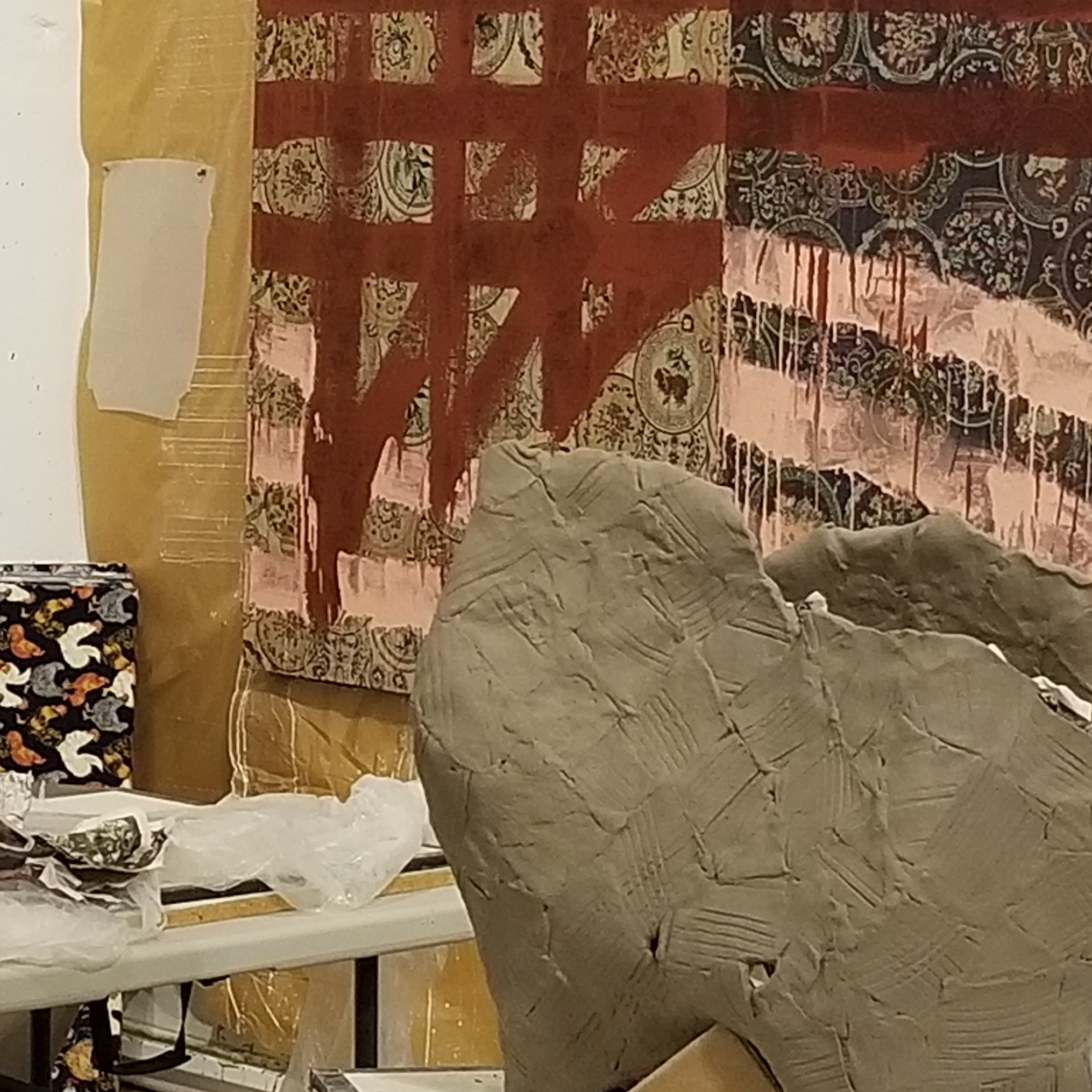
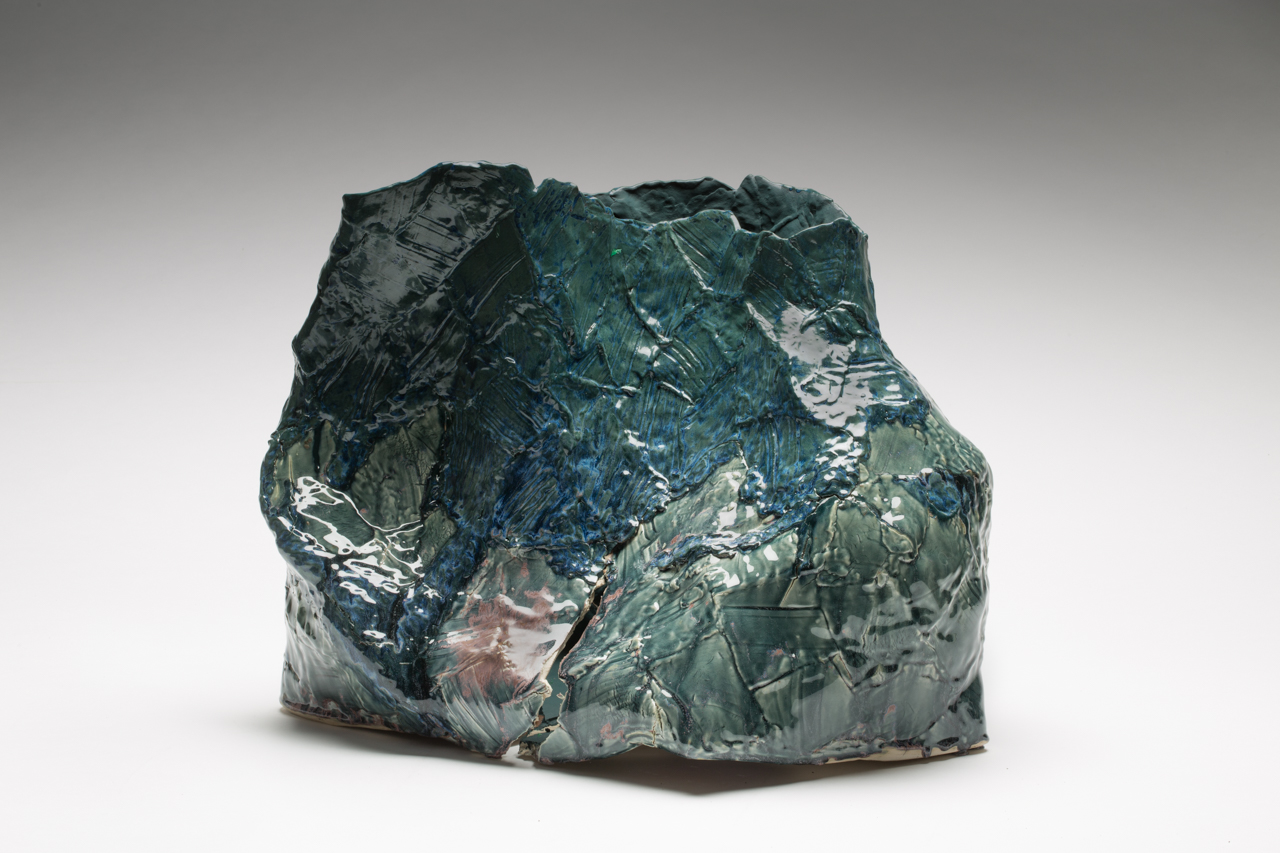
When Gravity Becomes Material: Blue Nocturne Après - Coup IV, 2018
19h x 25w x 21d. Porcelain and Terra Cotta.
Photograph by Tim Thayer.
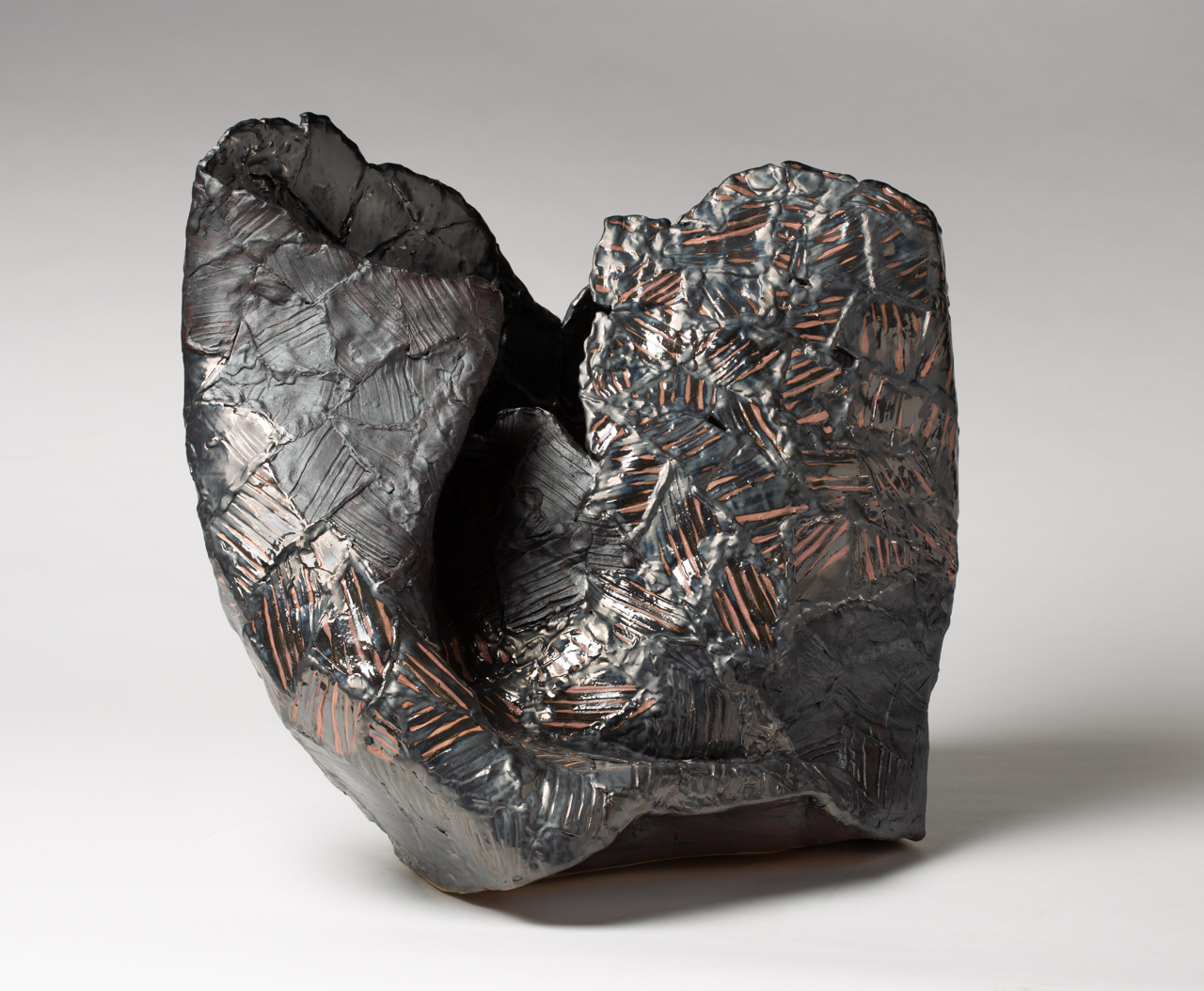
Novum, 2018. 19h x 25w x 21d
Porcelain and Terra Cotta.
Collection of the Artist, Michigan. Photograph by Tim Thayer.
My husband has written on McArthur in a way that I cannot. We live with a Binion, a small deep blue work. It has brayered quadrants of deep ocean blue, the sepia of blue that covers small black portraits. It is a surface that seems immense in its depth but still nearly seems sheer. It confuses in this way and compels the viewer to change positions over and over looking for the kaleidoscope view that will open things up. It doesn’t come. The work is open to hints but not interested in talking.
The pressure, the pushing out and onto of the grid. There is a grinding effect seen in the studio-busted nibs of sticks, broken by force. The artist and the critic walk into a studio and register different things. Boards on crates leaned on the wall, not hanging - there is too much repetitive force applied, gravity has to get involved.
In carving this grid into faces I sense the walking of a perimeter, over and over. Like a farmer walking fence row at night, looking for the ensnared. There is a protective quality to the work, a containment I feel in the vessel world that is at play. I don’t know where he gets his ink but I feel it wells up from some source up a mountain pass and is pure pigment that has yet to be discovered by buyers and sellers. McArthur has a spare approach to dress and material but every single stitch is lush. The scarf, the ink. I am always thinking…. where did you find that? His personal sense of gorgeous mystery is transferred to the boards.
McArthur’s work hits me like waking up to a party table from the night before. The conversations replay on low, the place smelled of smoke and great cooking, someone, you have no idea who, left their wallet and gloves. You wonder if everyone made it home. So much went on there, but everyone had gone. The murmur is so strong, romantic, and slightly fretful. What went on last night? You begin cleaning and thinking. There is scrubbing and thinking in his work. Even the use of the address book as a collage element for the underneathness of his painting - this is a person who has lived a more vastly rich social experience than most of us ever will.
The other thing that draws me in is the awareness of the American South culture deep in the work. Though not a lived history I am from the South and understand what is implied by the maps buried in the work. This heritage is not relatable but entangled. I bear witness to his straddling eras and social predicament and it sets a hook of co-ownership in me.
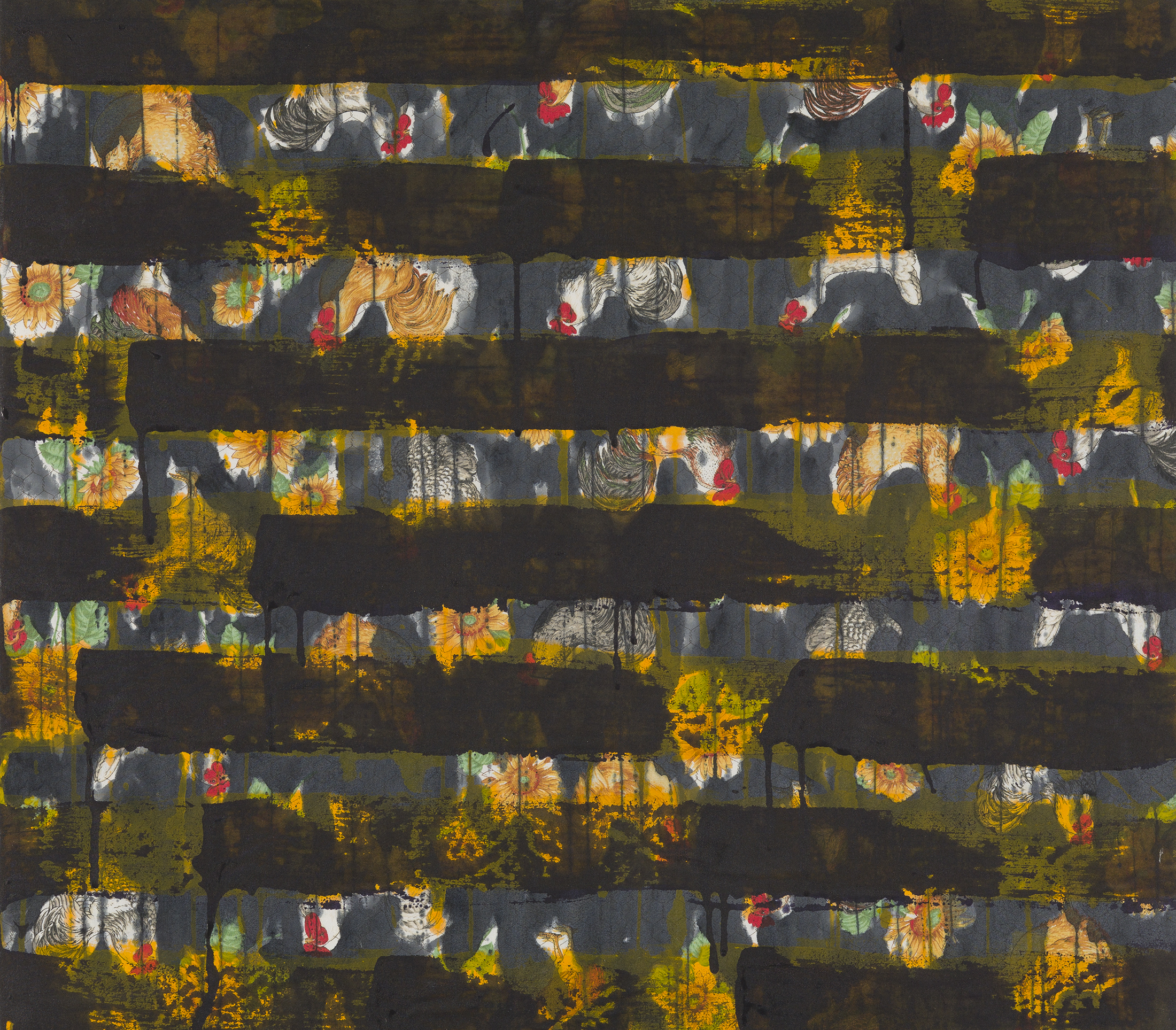
When Gravity Becomes Material: Creosote Yellow Bright. 2018.
Private collection, Michigan. Photograph by Tim Thayer.
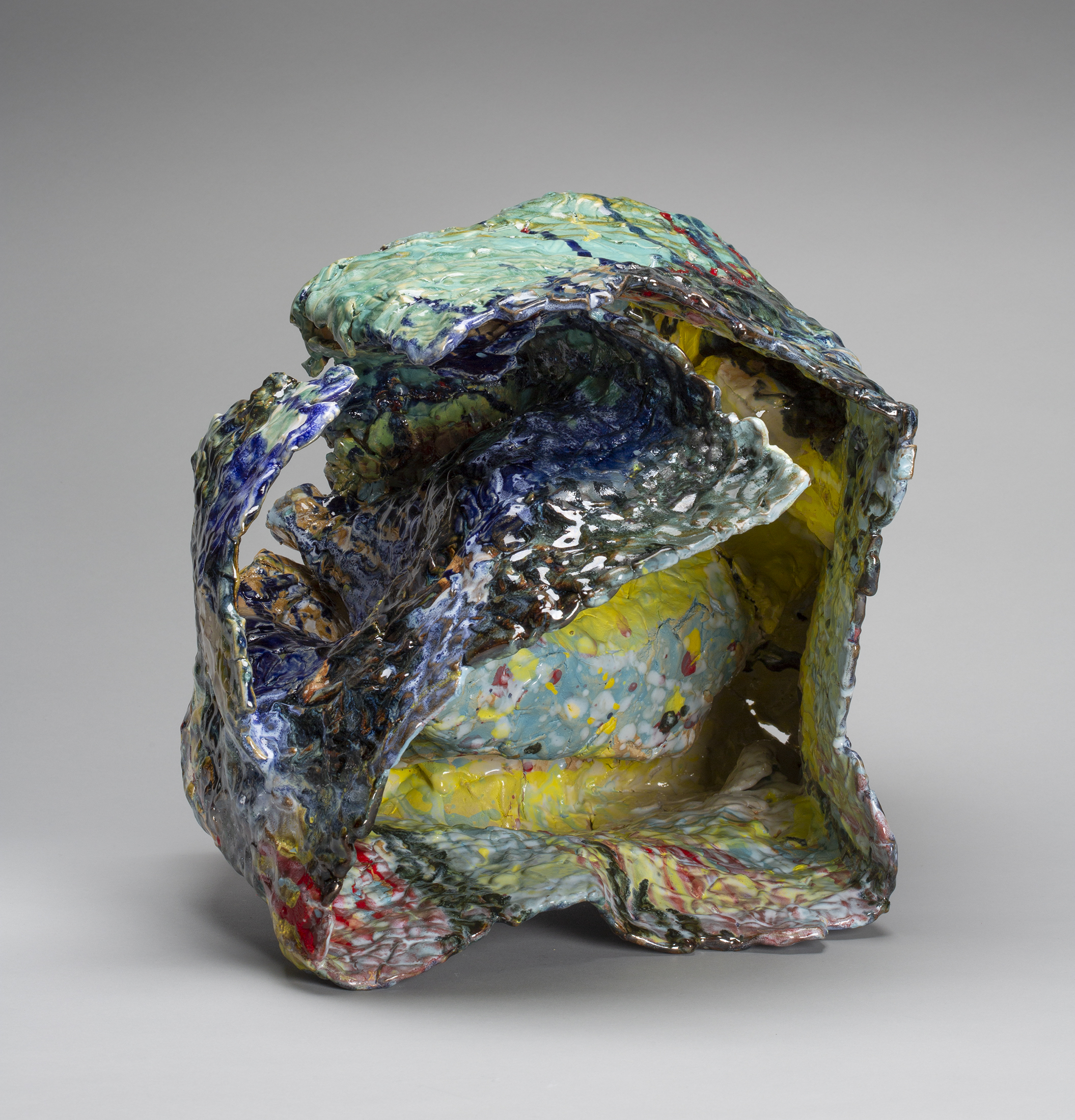
When Gravity Becomes Material, 2018.
24h x 18w x 16d
Stoneware and Terra Cotta.
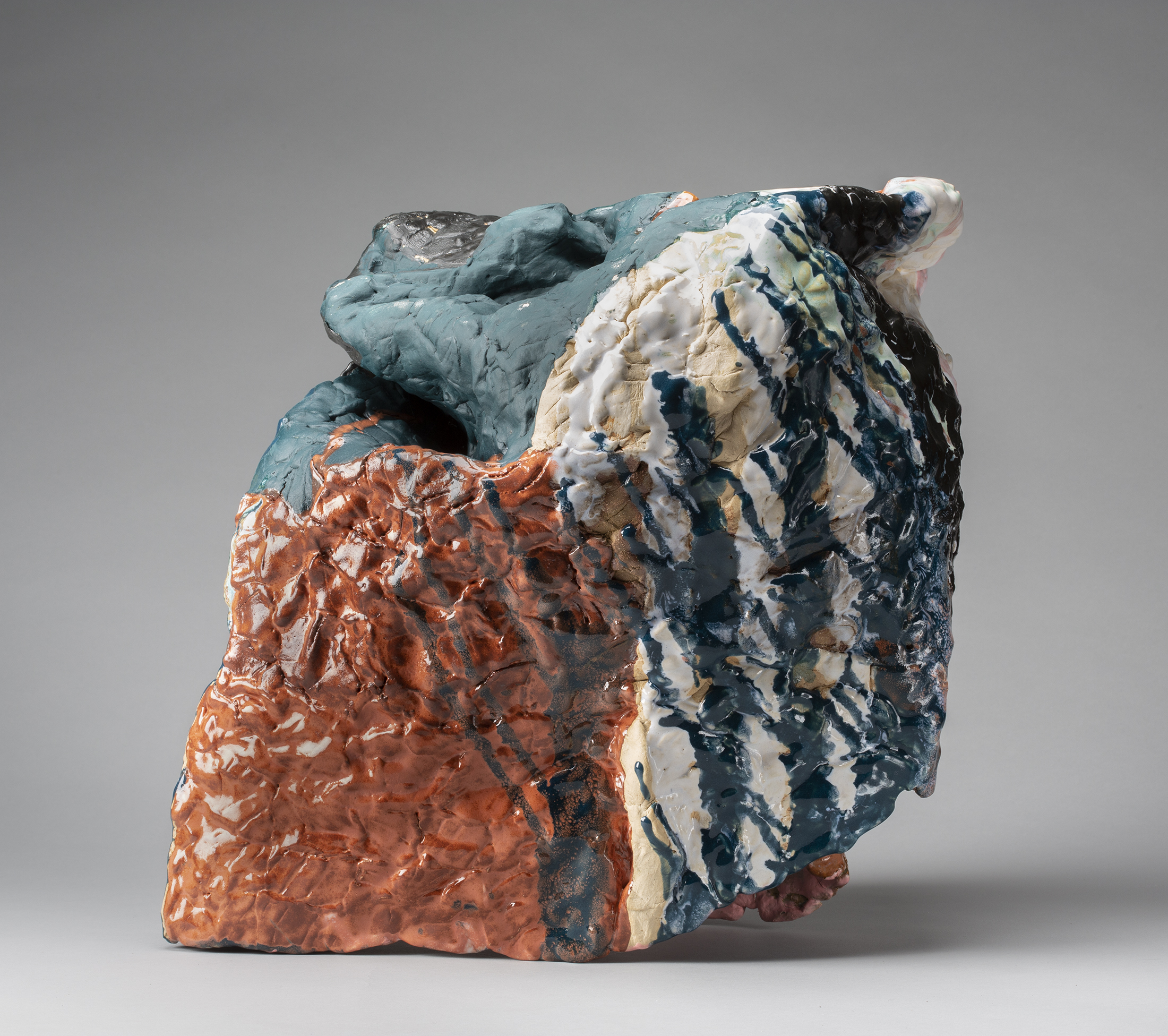
When Gravity Becomes Material, 2018.
24h x 18w x 16d
Stoneware and Terra Cotta.
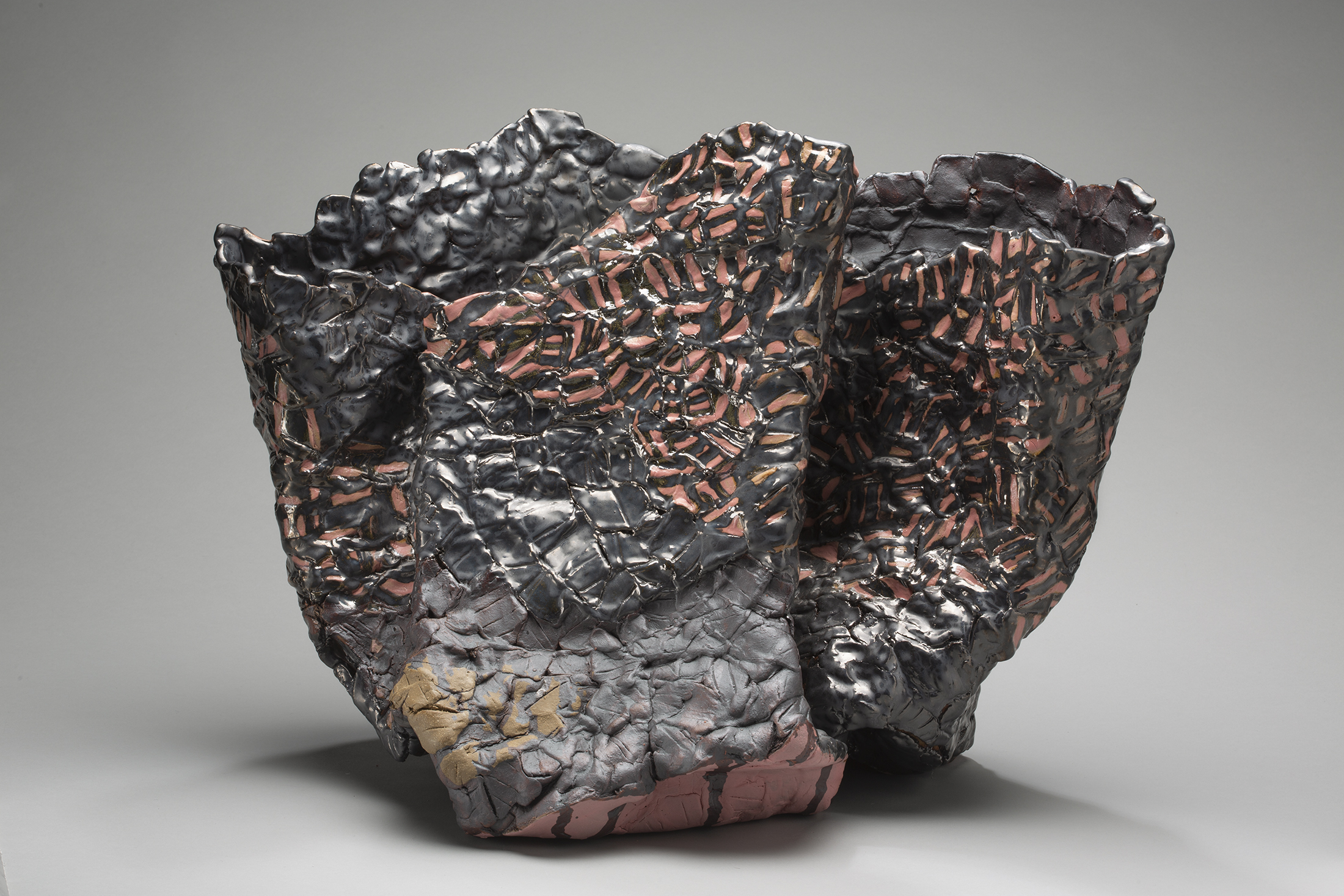
When Gravity Becomes Material, 2018.
24h x 18w x 16d
Stoneware and Terra Cotta.
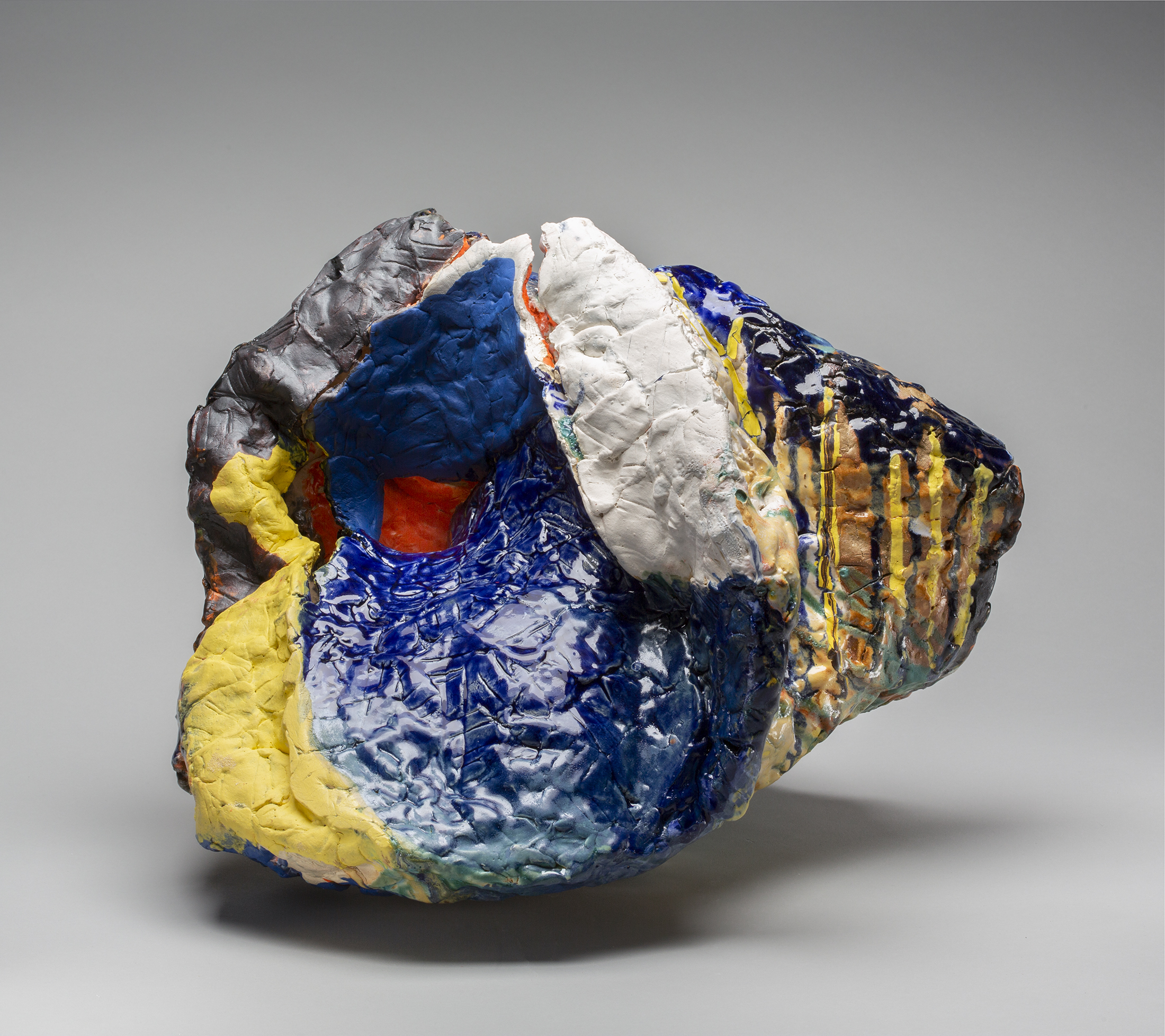
When Gravity Becomes Material, 2018.
24h x 18w x 16d
Stoneware and Terra Cotta. Private Collection, Michigan.
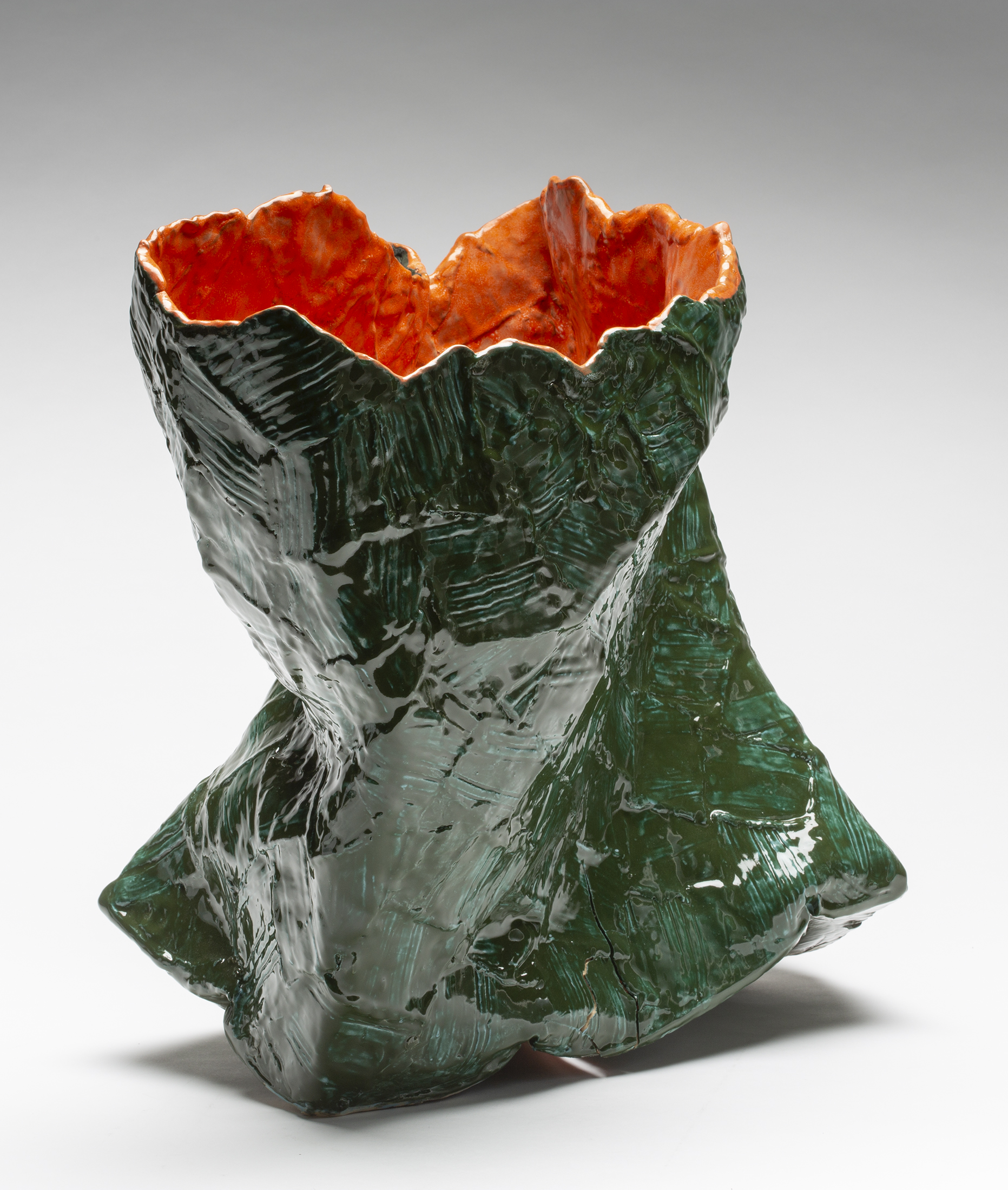
When Gravity Becomes Material: Phthalo Green Après - Coup III, 2018.
21h x 26.5w x 18d
Stoneware and Terra Cotta.
Private Collection of McArthur Binion. Photograph by Tim Thayer.
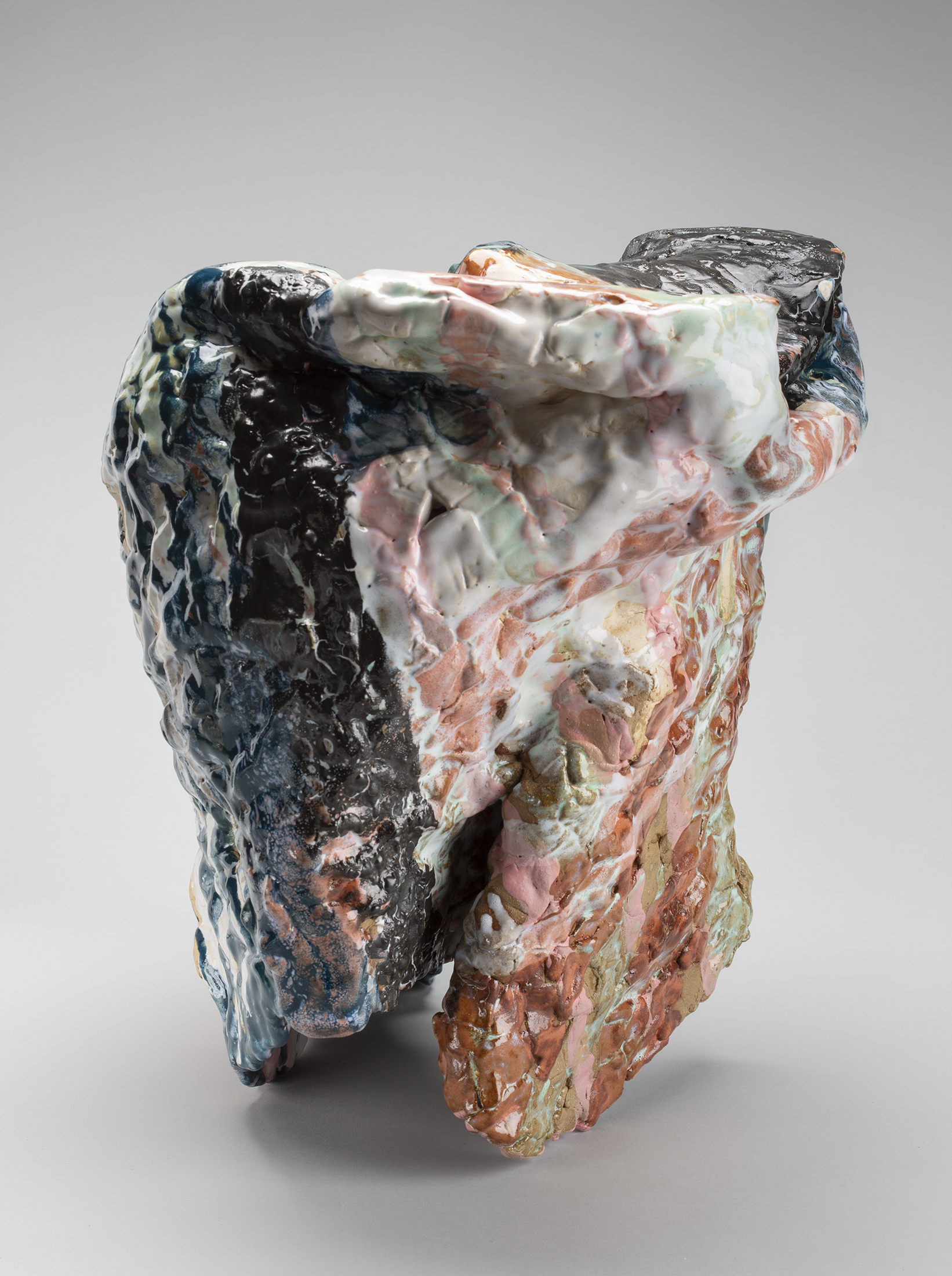
When Gravity Becomes Material, 2019.
24h x 18w x 16d
Stoneware and Terra Cotta.
Photograph by Tim Thayer.
The fold, the fold, the fold, the fold. I love to look at Hantaï and Binion side by side not because they paint with the same objectives in mind but rather to enjoy the relationship of covering or submerging in Binion to the blank in Hantaï. They also share a repeat in the quadrilateral geometry but again - coincidence, and coming about from different processes and a different conceptual place. In Hantaï the process-driven work leads back to such a strong sense of absence. It is not the color or scale in this work that is striking but the repeated absence present in each piece, at any scale. I keep trying to crain around the form to see the unseeable. I want to flip the pieces to see the back - the real side, want to see the hidden image. Of course color matters here - the muted washes - water and dilution is central in my work and I feel this ghostly draining or whispering in his use of fugitive color. The scale of the wall and covering rooms speaks to tapestry and interior coverings. As a might-have-been architect, the fact that it moves from floor to wall and over charins, over him in portraits makes the objects structural in a way, and also creates a sense of presence or pulse.
In order to write this I listened to a self composed piece by cellist Nancy Green. Looking at this work as bombs drop on Ukraine. The work is that of endurance of generations of oppression; again, not a shared experience but work that takes me to the outer reaches of human endurance, the moments just before collapse. Salcedo’s work makes death seem a relief from the perpetual pressures of pending or active war. Am I seeing or ogling?
In 2015 we saw her retrospective at the Museum of Contemporary Art Chicago. The work was hair-raising. Cast / stuffed armoires - the spaces of bedrooms where private items are stored, heirlooms. She incarcerated bedrooms, impaled stacks of personal garments and somehow transmitted for the fortunate the experience of victimization. The chair infill in the City - a project tracking with the velocity, scale, and punch of Ai Weiwei - operatic. Salcedo mops up blood with items from your hope chest. There is a woven hair shirt - low level torture that looks soft and inviting, hair dressers will tell you that hair works into flesh and blister. Night gowns - or were they blouses, submerged into plaster? - stuck in a fragile solid, frozen motionless but not preserved because plaster is easily cracked. She takes the blank, the void, and suffocates it. It is terrible work to see.
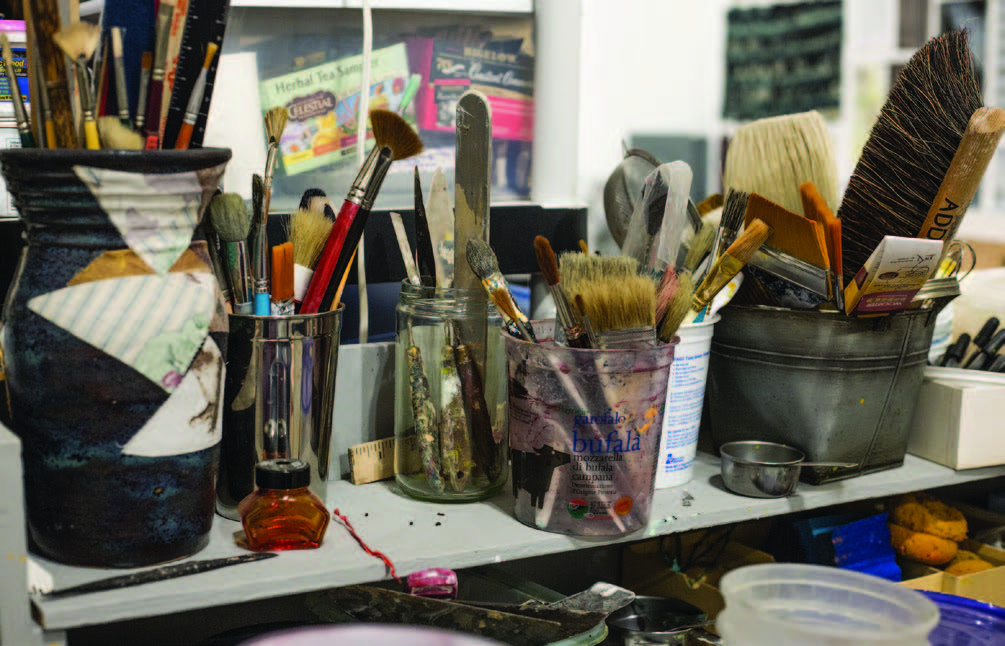
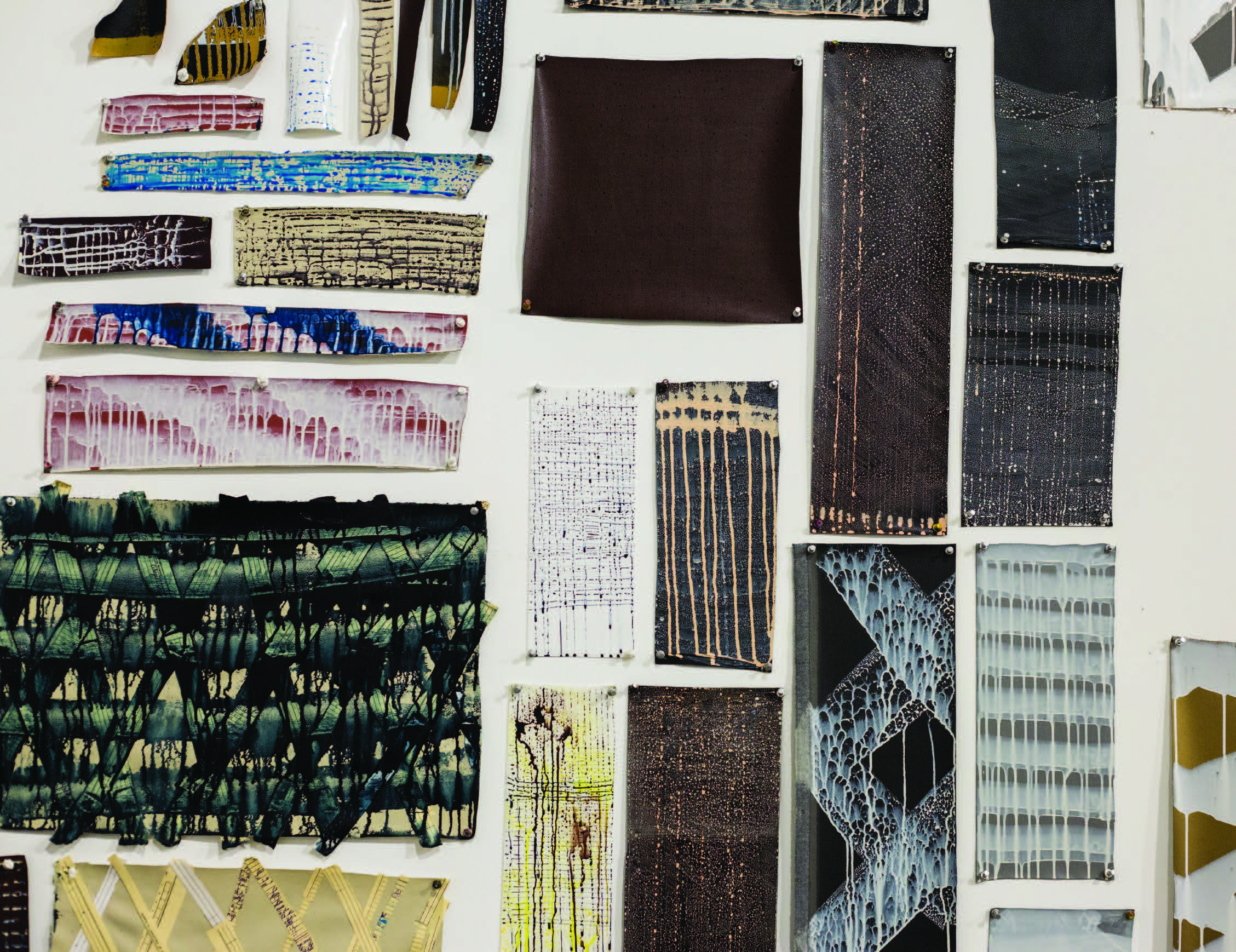
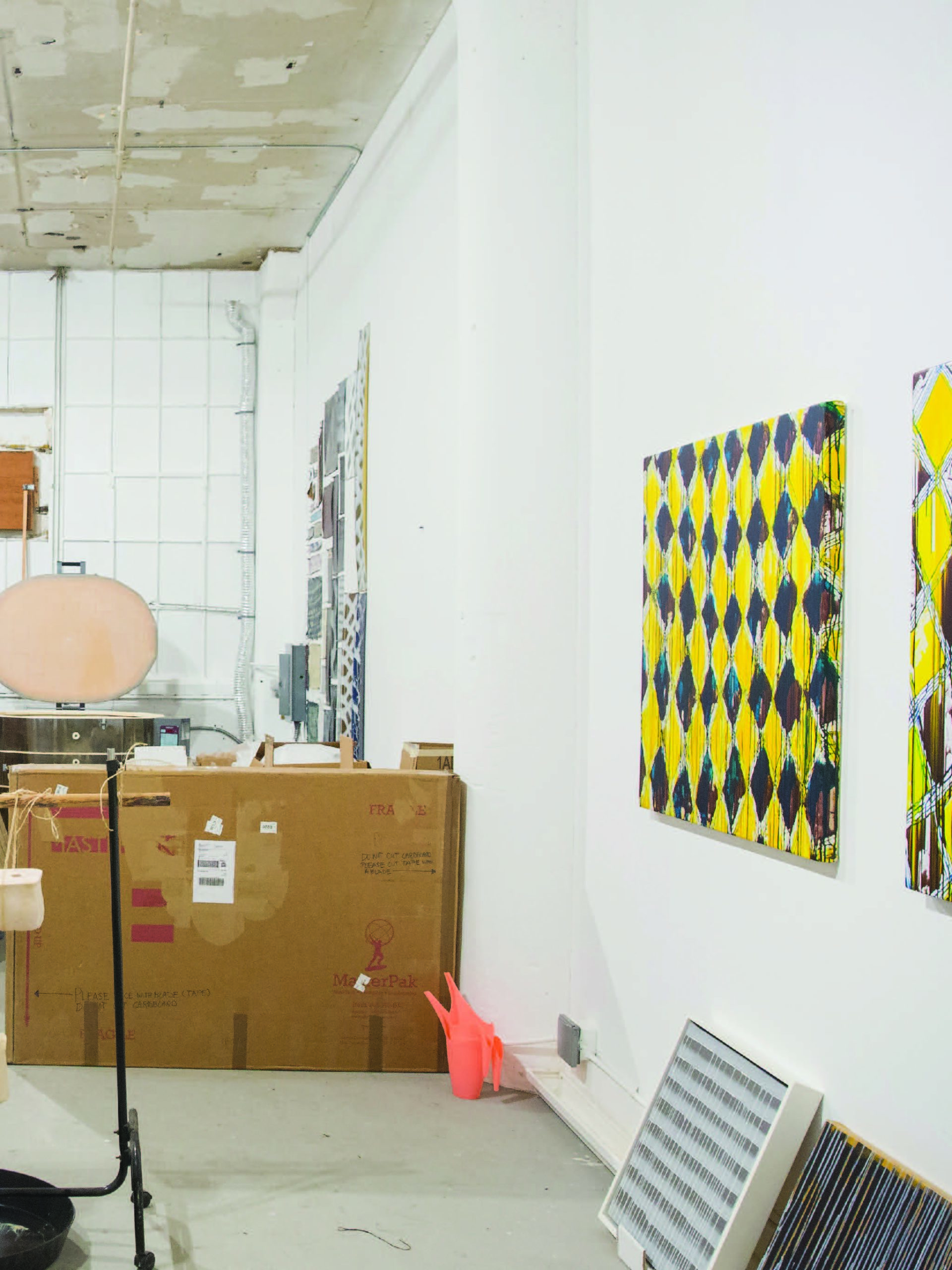
Look up François ROUAN (born in 1943), Collage N°6 (Lilas, Orange, Rose, Blue) - 1966, and you will know what I am getting at. In Rome of the 1960s, he became involved in the Supports / Surfaces movement and the interlacing of the figure/ground found clarity in this mode. This artist stamps, weaves, cuts, shapes, and encrusts works until they are blinding. My eyes struggle to see the point, they dart around looking for rest. The color emerges from a baklava form matted down after what feels like years of revisiting, a trait in artists I have always admired. I never do this. Whether he does or not isn’t important, what is it that feels to me that his works are dragged around after him like a wooby collecting dirt and pedals and twine, whatever they encounter and then he stops to repeat the stain, replicate the impression looking for what just happened that brought surprise or interest. How he fixes on shaping over time, the ovals, for instance, or the edges that are empowered to shape as they find their natural end like the ripple edge of a hide. This might not seem unique, to make a shape, but other artists, you can feel the scissor cutting - the eye understands how the tool curtailed mystery like turning off your song at the best part. Rouan is in conversation with edges and knows how to accommodate this abruptness - how does one stop a color? In this light he is an early quilter focused more on the souls of the wrap instead of a perfect edge - he, too, does not make quilts for hanging.
This 1966 series of tissue drawings is the lighter version of Rouan but the covering, intermeshing and braiding in the heavier works is the more frequent rumination. For instance Figure de Venise n°VIII, 1998, 1999, wax painting on paper, the translucency brought to the braid. And imagining the handling of this object - to bend or overheat it would be the end. His work is stubborn and imposing and I find this permissive. Like McArthur he is in a long-term relationship with the square and diamond but he is willing to twist and smear. As a painter you find out there is intending brown and there is ending up with brown. He ends up with brown - and it works. Over the decades he returns to wax, on canvas later, and continues to work with mirage, a snake whipping through the grass below. Every form hidden in plain sight. He moves continually back to paper which is both body and ground and merges the two with porosity and tacking that I find active in his construction - hammer and nails. The force of the color informs this feeling - the discord he is comfortable imposing helps the hammer swing in the work. Looking at portraits of the artist at work he looks back like a bulldog - unmovable. He makes an unyielding look so desirable.
Note on Braiding1Tissage, also, plaiting, weaving.
Braiding: the interlacing of two images, method of interior prospection.
Far indeed from the manifestation of a subjectivity folded upon itself, the project of expression-communication is situated at the level of the most essential rhythm, at the level of the most intimate respiration.
Different phases of the realization of the picture [tableau]:
a/ Impregnation of color on canvas by immersion in baths of painting of each of the
two surfaces. Recuperation of the poetic potential of chance.
b/ Destruction of the colored surfaces from the first operation through a repeated
graphic intervention: trames [lit weft; screen tone [printing], fig. frame(s)].
c/ Decoupage and braiding of two images tightening [pour tendre] into a
“condensation.”
This work opens out onto [debouche] the realization of a complex network, a veritable thread allowing me to capture unforeseen crystallizations, and to bring back to the surface an interior light. This light constitutes the ideal space of respiration, the black picture [tableau] upon which is inscribed the project of expression-communication.
On the canvas, not a message, but the trace of a vibration which becomes embodied with its vehicle. [ image ] (Paris, 8 January 1971)
François Rouan,“Tissage,” Notes du regard [Notes from Looking] (Paris: Galilée, 2011), 23.
It’s all there.
"In the nursery, that is where to find the themes of human nature: the rest is 'working-out', though it be also the real music."
References
